Foot Strike: The Ultimate Guide
Types of foot strike, should you change it and how it relates to injuries, running performance and running shoes - we’ve covered it all in this guide. 31 hours of research condensed into an in-depth guide so you can easily find the answers you’re looking for.

The best foot strike doesn’t exist. Even in pro athletes, foot strikes vary across the board. The foot strike that is the best for you definitely exists. Usually, it’s the one you chose naturally, without thinking about it.
It’s runners with injuries and elite athletes who tend to show interest in foot strike changes.
3 types of footstrike and dedicated shoes for them
Foot strike tells you the way your foot lands while running. There are 3 types of foot strike:
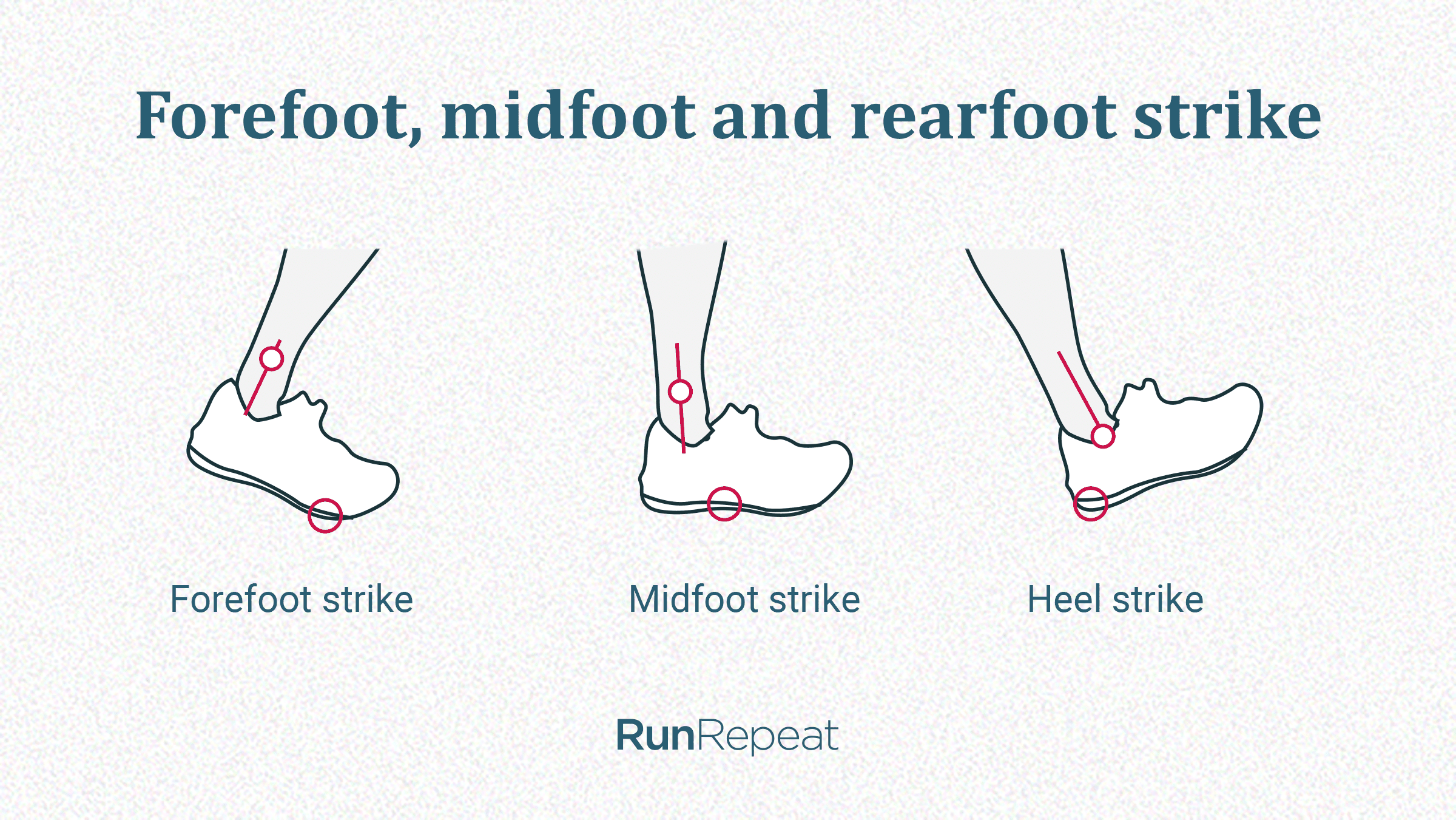
- Forefoot strike (FFS): the forefoot lands first. The heel can land afterward or not at all.
- Midfoot strike (MFS): the outside edge of the middle of the foot lands first. Then the foot flattens and both forefoot and heel are on the ground.
- Rearfoot strike (RFS) or heel strike: the heel lands first, followed by the forefoot. 94% of runners are heel strikers (based on a study of 1,991 runners).
Landing on the midfoot during a test run in Altra Lone Peak 8
[/local_video]
Landing on the heel while running in Asics Gel Kayano 30
[/local_video]
In our shoe lab, we cut all the shoes in half and measure more than 20 parameters. This allows us to discover what makes each shoe tick and why it works or does not work for a certain foot strike.
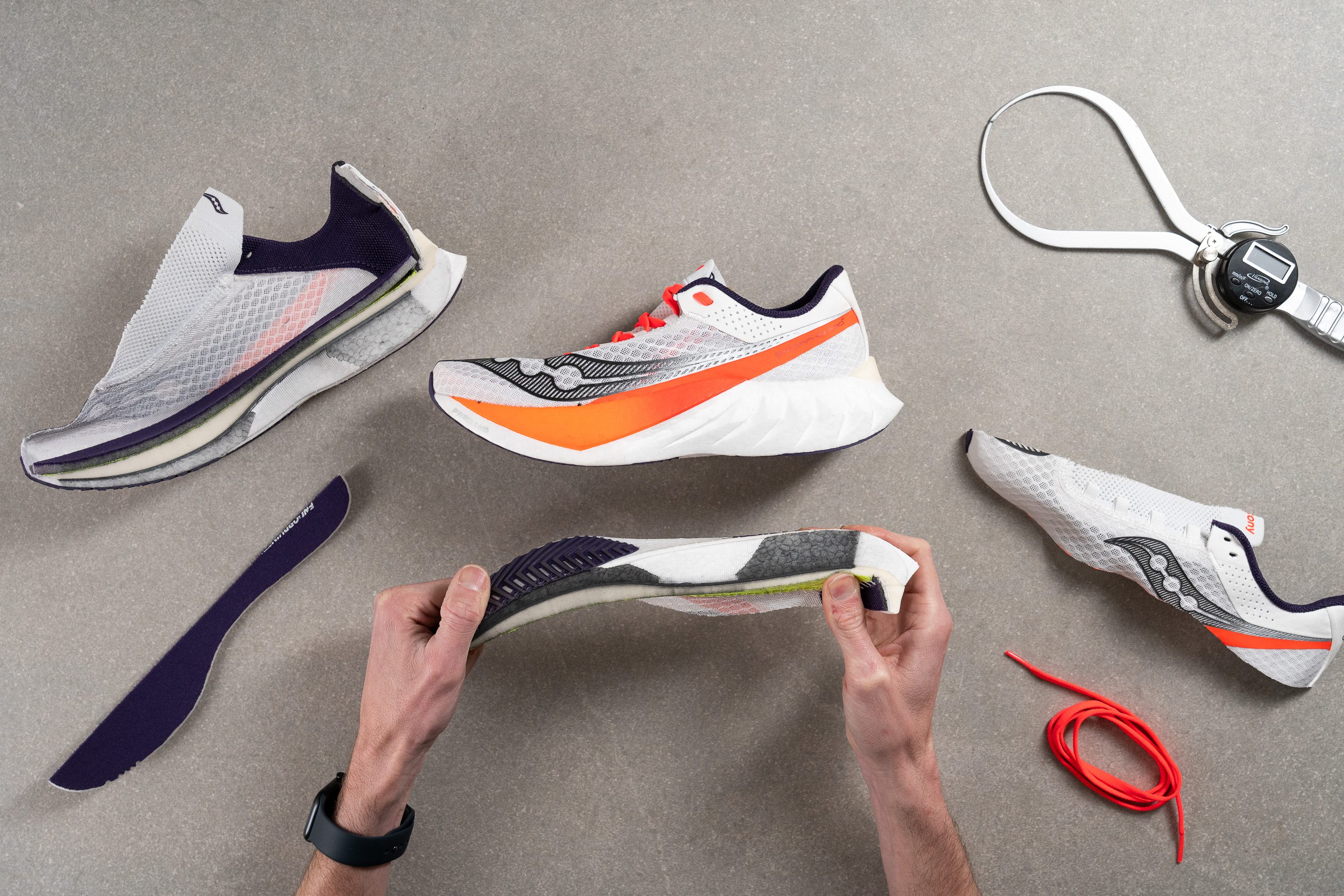
| The main differences between forefoot strike, midfoot strike and rearfoot strike | |||
| Forefoot strike | Midfoot strike | Rearfoot strike | |
| Running form | The upper body tends to be forward from the hips. Weight completely focused on the ball of your foot. | Weight is balanced, almost even on top of your hips, knees, and ankles. | Heel strikers tend to overstride and use hips and glutes less. |
| Stress | Helps alleviate the impact. Less impact on the knees, more stress on the calves and Achilles tendons. | Harder on your knees and shins. Opens possibilities for over-striding. | |
| Distance |
Great for sprinters, not so good for long distances due to the strain put on calves and Achilles. Might be good to change from forefoot to midfoot if aiming at long distances. |
Heel striking can benefit long-distance running. The majority of marathon runners and ultra runners are heel strikers. | |
| At initial contact with the ground | Plantar-flexed ankle position and a more flexed knee position (source). | Greater ankle dorsiflexion range of motion and decreased knee flexion range of motion when compared to rearfoot strikers. | Dorsiflexed ankle position and a more extended knee position (source). |
| Economy | Habitually rearfoot striking runners are more economical than midfoot strikers (source). The rearfoot strike pattern was found to be significantly more efficient on a metabolic level (as shown here). | ||
| Vertical loading rates | Higher vertical loading rates found in the rearfoot strike when compared to the forefoot strikers. | ||
To dig even deeper, we’ve summarised what the scientific world has said so far regarding the foot strike and its relation to injuries, running economy, speed, changes:
| Scientific overview: changing foot strike and its relation to injuries and running economy | |
| What if you change your foot strike? | This study has concluded that changing to a mid- or a forefoot strike:
|
| Should you change your foot strike? | This meta-analysis looked at 53 studies and concluded:
|
| How running economy changes with the foot strike? | This study showed:
|
| How speed affects the foot strike (in elite runners)? | The % of a rearfoot strike increases with the decreasing of the running speed and, conversely, the % of midfoot strike increases as the running speed increases . |
| Is forefoot strike a must in barefoot running? | This metareview looked at 30 years of research articles and concluded that runners should use a forefoot strike pattern rather than the heel strike one to reduce ground reaction forces, ground contact time and step length. |
| How to change your foot strike? | This study has shown that the foot condition (barefoot or shod) matters more than running speed. It’s recommended that runners change their footwear if they’re thinking about the foot strike adjustment.
Furthermore, it showed that runners prefer to heel strike regardless of their running speed (when running in shoes). When barefoot, only 24% of strikes were rearfoot and there was no significant change in the strike pattern distribution with the running speed. |
| Which strike leads to fewer injuries? | Mild injuries: rearfoot striking runners were 2.6x more likely to have them. Moderate injuries: rearfoot strikers were 2.4x more likely to have them. Traumatic injuries: no significant differences in rearfoot striking and forefoot striking runners (source). |
| Which injuries are related to heel strike? |
Hip pain, knee pain, lower back pain, tibial stress injuries, plantar fasciitis, and stress fractures of lower limb bones (minus the metatarsals) were 2-4x more frequent in rearfoot strikers than in forefoot strikers. Injuries predicted to be higher in forefoot striking runners (Achilles tendinopathies, foot pain, metatarsal stress fractures) were not significantly different between them and rearfoot striking runners. |
Why does heel strike have such a bad reputation?
Because of the ground reaction forces.
Ground reaction forces are one of the ways of analysing running and what impact it has on the body. They describe how the foot (in the shoe) pushes the ground. These tests are usually done in the lab.
Here, we should distinguish 3 metrics:
- Peak impact: the greatest force that happens during the initial landing.
- Active peak: the greatest force that happens during the foot strike.
- Loading rate: how the forces build up, how steep the curve is during the initial landing.
This graph below shows why heel strike is so special: it’s the only foot strike with such a distinguished impact peak. It happens when the heel hits the ground, while the rest happens afterward (full-ground contact and toe-off).
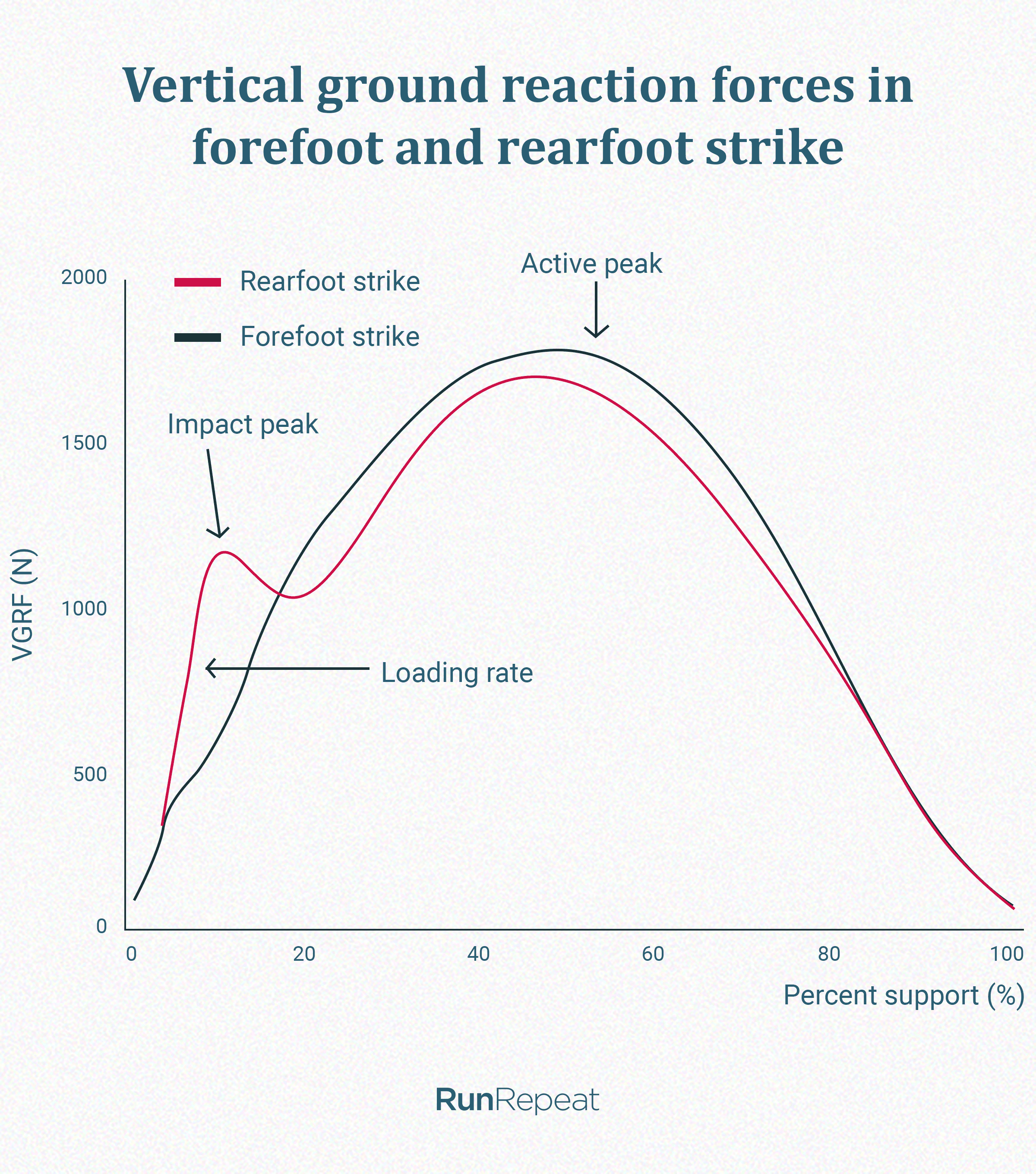
Why is foot strike so important?
There are many reasons for the foot strike to be such a buzzword and something runners pay attention to. The top 3 are:
- It can affect your speed,
- It can affect your energy consumption,
- It might have an impact on the risk of injury.
This is why runners want to utilise an optimal version of impact (foot strike).
Additionally, the foot strike is just a piece of the puzzle. It is usually closely related to heel drop (type of running shoes), running cadence and overstriding.
How to determine your foot strike
The best way to determine the foot strike is to find the position of the centre of pressure of the initial contact. The strike index is that position expressed as the percentage of the length of the foot.
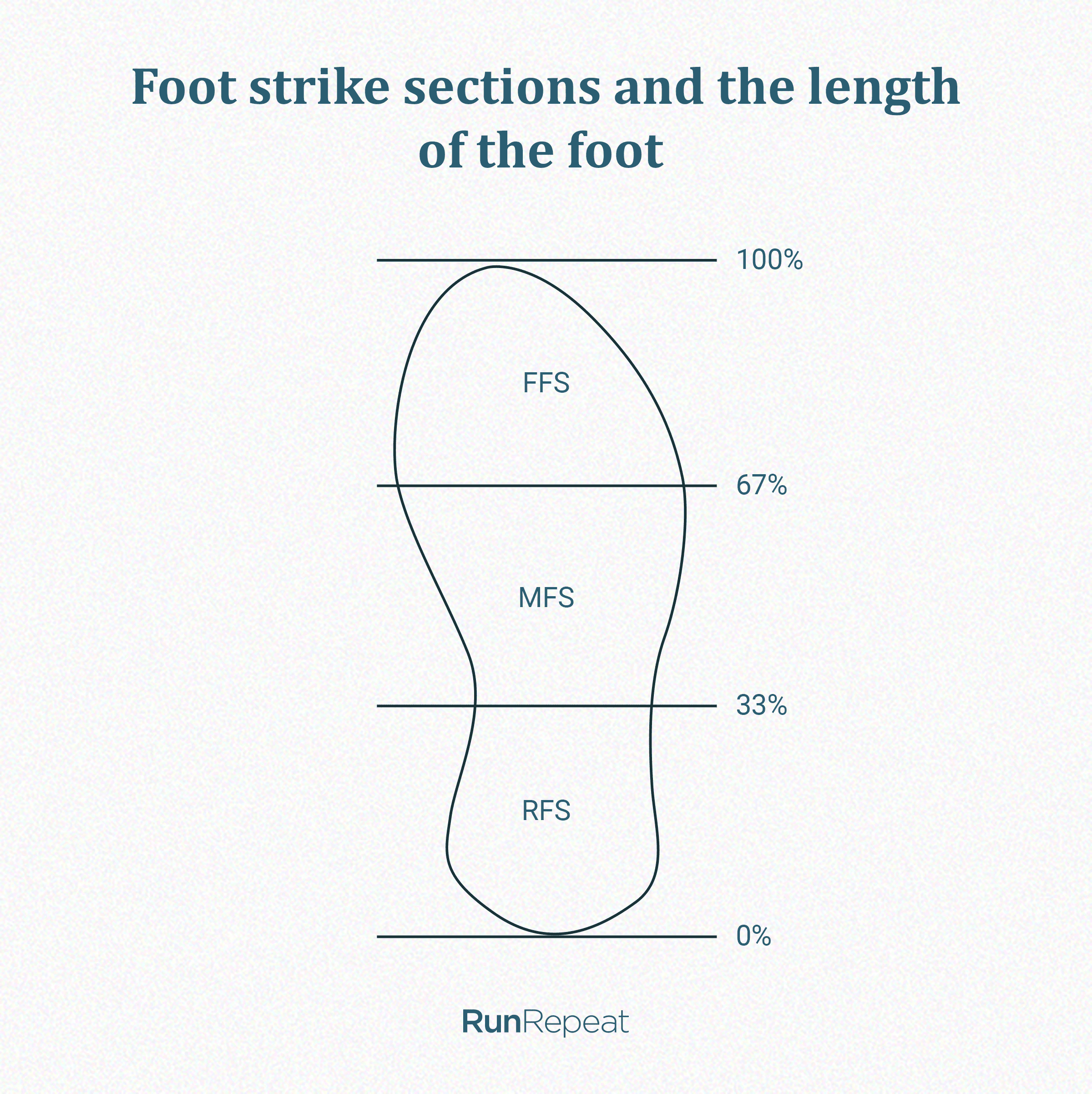
This way, 0% represents the extreme rearfoot and 100% represents the extreme forefoot strike.
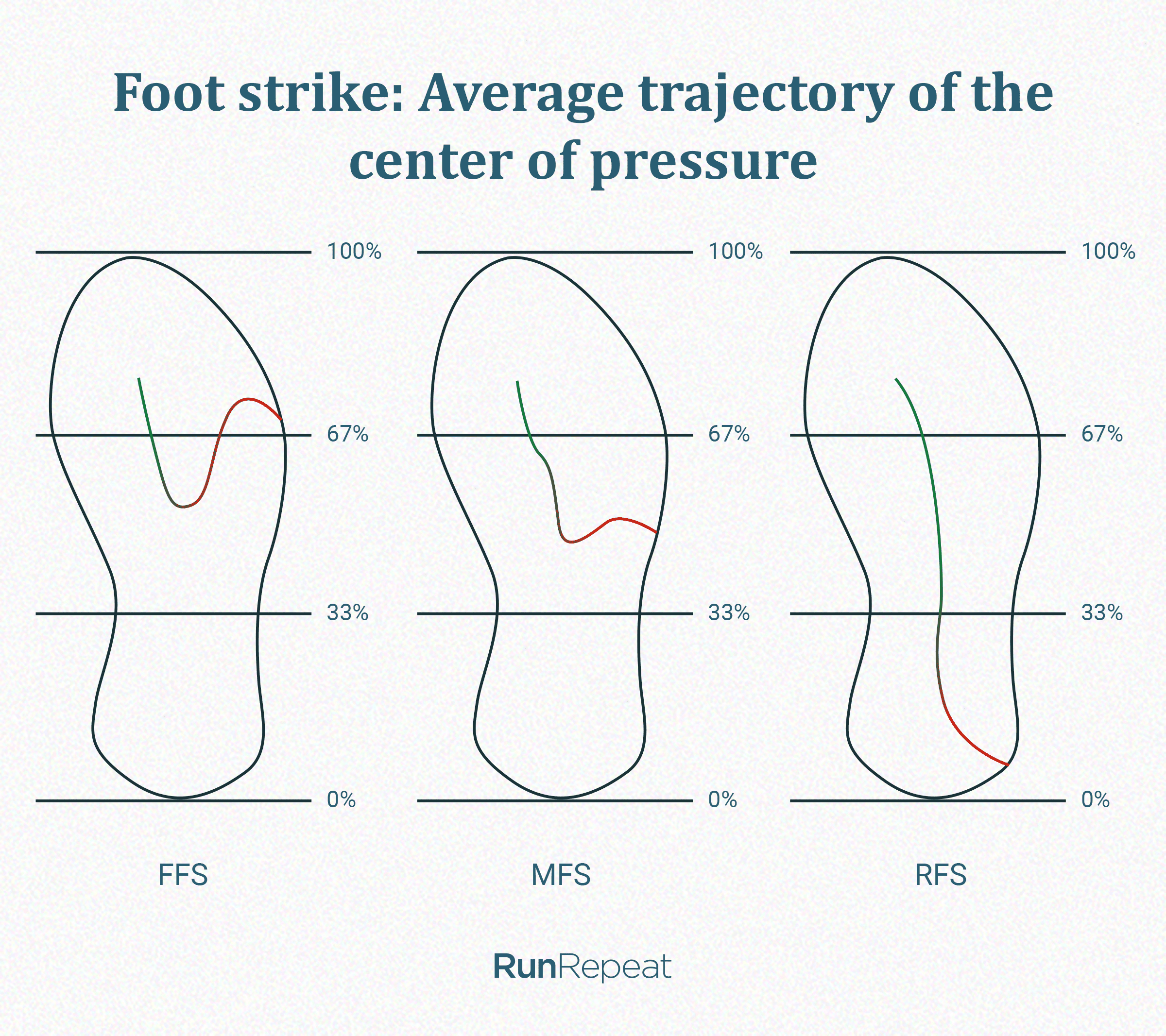
There are a few foot strike determination methods. In terms of accuracy, here’s how they rank:
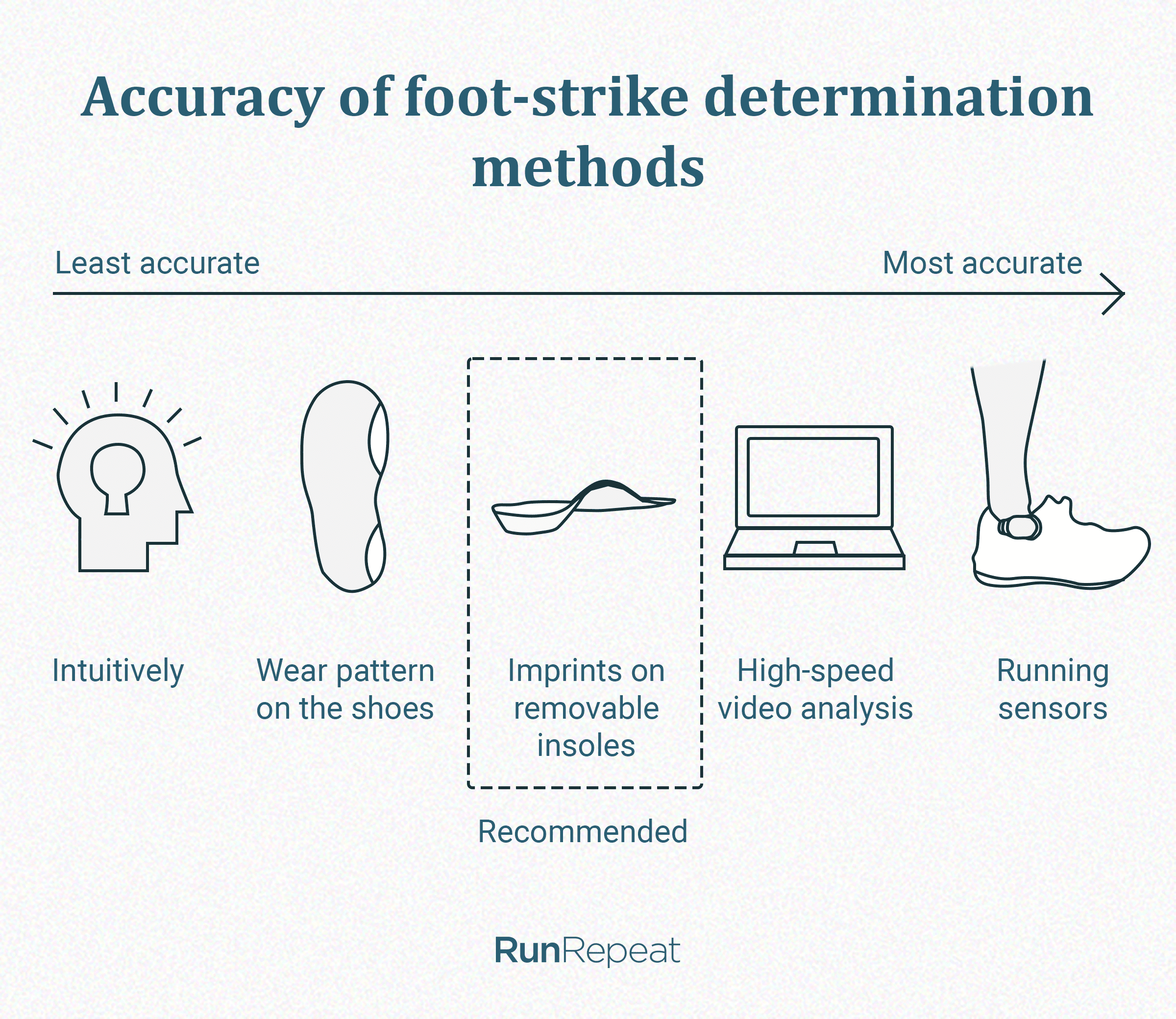
Imprints on removable insoles
Highly recommended:
- Take the removable insole out of your shoe
- Notice where the imprint is the strongest or where the insole degrades the most
- The strongest imprint (degradation) points to the area with the greatest loading (this is where you strike)
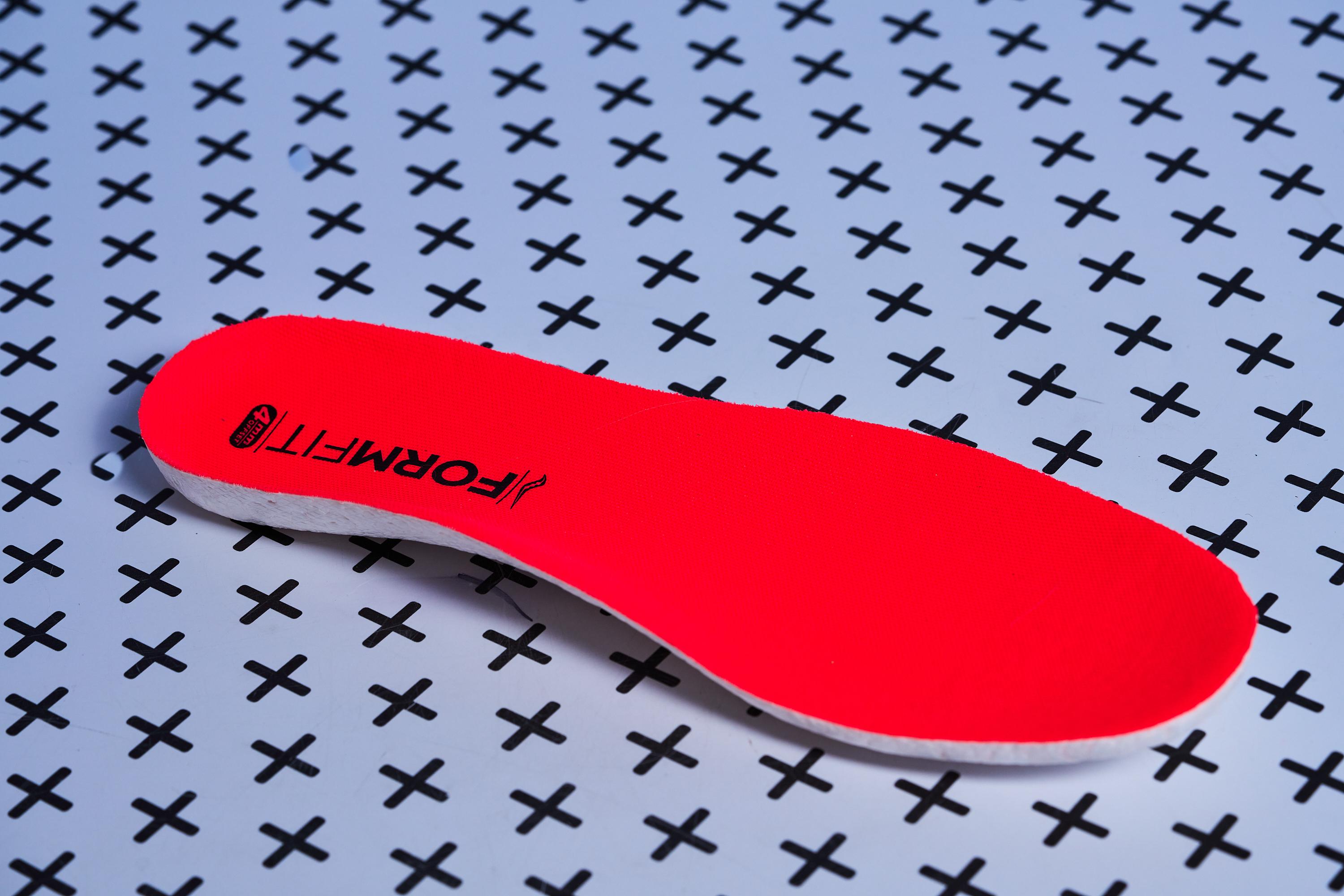
Important to know:
- If not easy to notice just by looking at the insole, touch it. Feel where it compresses the most.
- Check both insoles (left and right), especially if you had any foot injuries or surgeries. You might have different foot strikes.
Intuitively
While this method is the simplest one and the least time-consuming, it doesn’t work.
Runners aren’t good at identifying their own foot strike pattern. Here’s proof:
- Cross-country runners correctly self-identified their foot strike pattern in 56.5% of cases, while recreational runners did it 43.5% of the time, as shown in this study.
- In this study, only 68.3% of runners reported a foot strike that corresponded to the one determined by the video analysis.
Wear pattern on the shoes
Same process as when determining the pronation, which we described in-depth in our guide on pronation. You look at the outsoles of your shoes and notice which part of the shoe got destroyed the most.
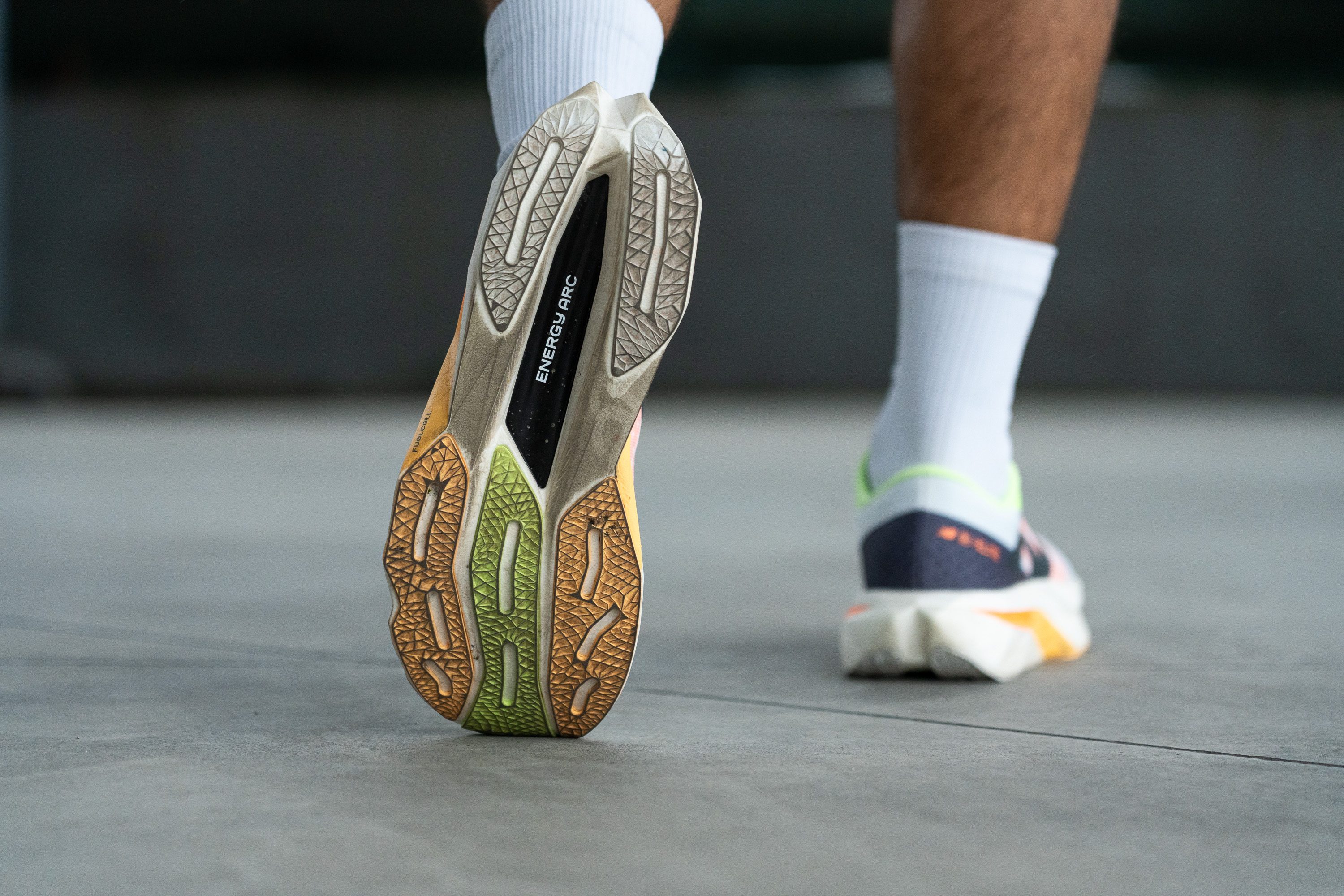
This method is not recommended in the case of a foot strike because the outsoles get wear and tear in different places depending on the type of terrain (inclination, granulation, etc.).
Foot strike angle (High-speed video analysis)
It’s too difficult to determine the foot strike index because sophisticated and expensive equipment is needed. Fortunately, there’s a significant correlation between the strike index and the foot strike angle This angle is measured using high-speed video analysis.
This method is accurate and you might be able to use your phone camera (at least 240 frames per second).
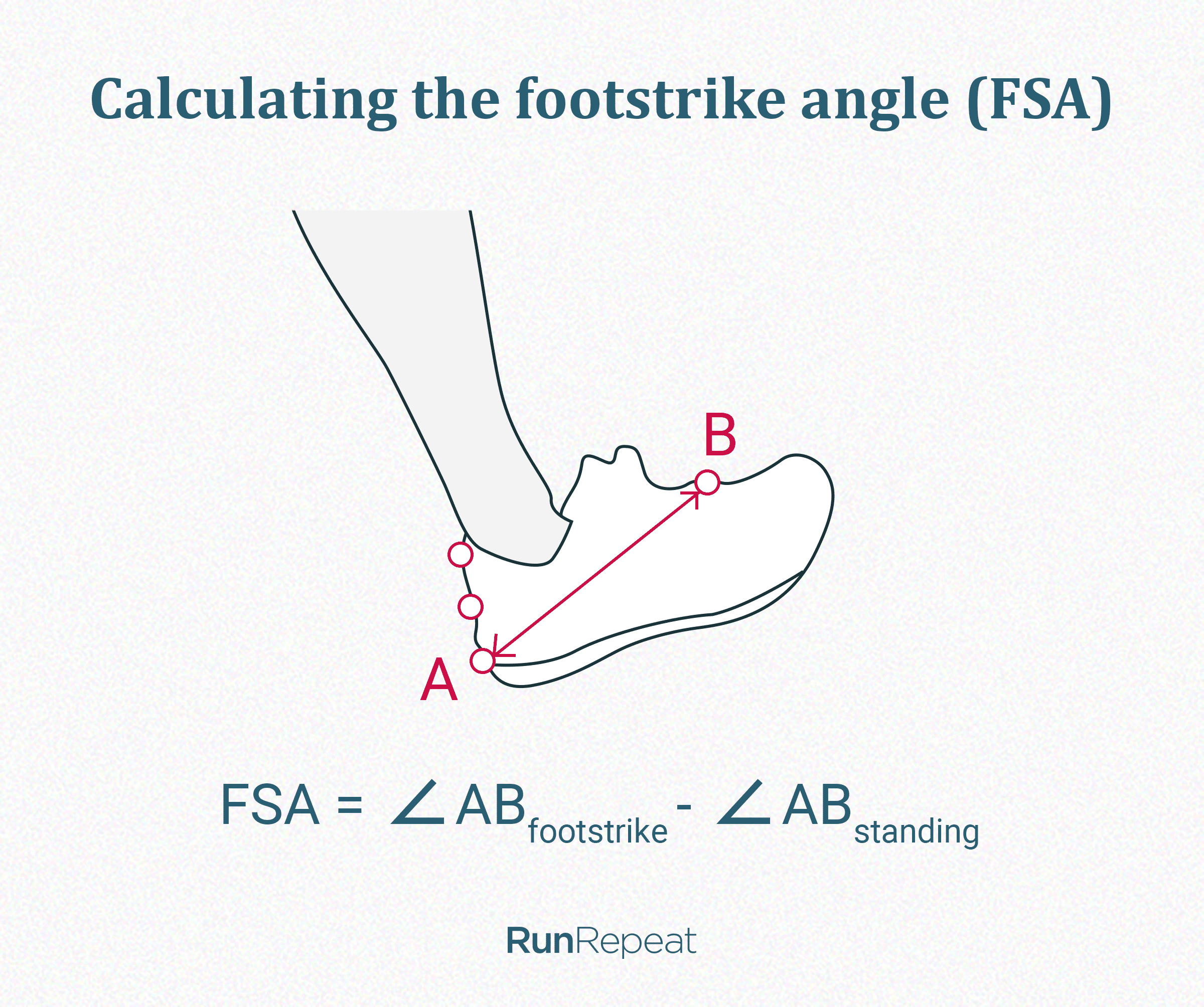
The foot strike angle is calculated as the angle between vector AB and anteroposterior axis (sagittal plane). The FSA in resting stance was subtracted from all values so that 0 degrees corresponds with a flat foot.
Running sensors and foot strike
This is by far the most accurate method to determine the foot strike. These sensors are usually used in specialised labs and offices devoted to runners. When you schedule an appointment, you’re in specialists’ hands.
Challenges with foot strike determination
First, with the forefoot strike, one can land on the forefoot and not on the heel at all, or one can land on the forefoot and then on the heel. In this guide, both of the patterns are classified as FFS.
Second, 11 out of 45 left and 13 out of 45 right initial rearfoot runners in this study made the initial contact at the heel, but the maximum loading occurred midfoot. This adds some confusion: should foot strike be related to the initial contact or maximum loading contact?
Should you change your foot strike?
If you’re running comfortably with no injuries, most likely not. People who consider changing their foot strikes are usually elite athletes and runners who are experiencing severe foot pain. Remember: there is no definitive proof that one foot strike is better than another!
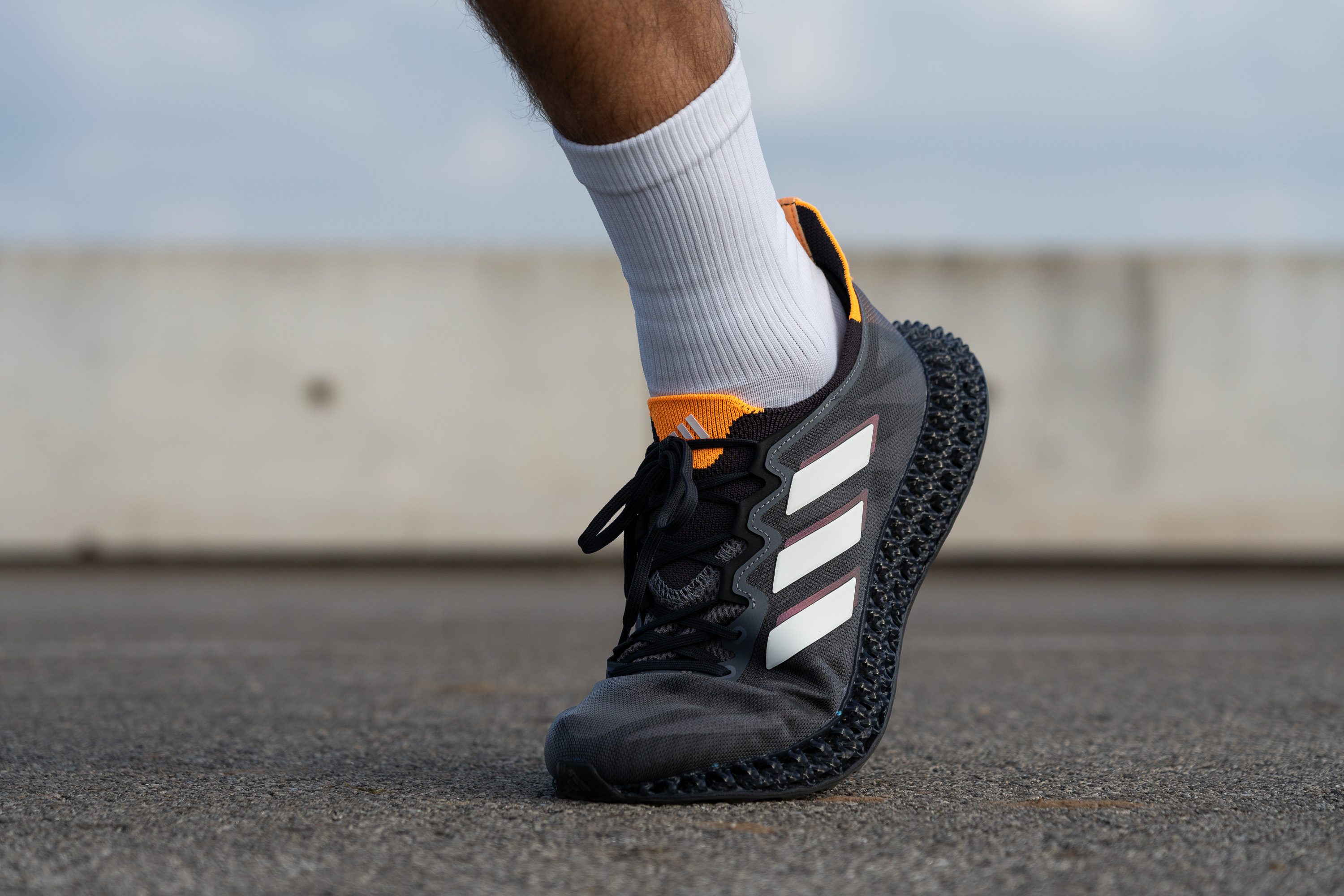
This research has shown that altering your strike pattern can actually lead to increased injuries.
Don’t overthink this and let your body do what comes naturally when choosing a foot strike pattern.
If, however, you insist on changing the foot strike, do it mindfully and listen to your body. What will help is working on the running form, cadence, overstriding and strength exercises. If you’re a rearfoot striker, sometimes increasing the cadence and reducing overstriding does the trick and you can notice your strike moving towards the midfoot or even forefoot strike.
Heel drop and foot strike
What also might help with overstriding (and, therefore, foot strike) is paying attention to the heel drop. It might help you reduce overstriding both in heel strike and forefoot strike. We usually recommend a higher drop (10 mm) for forefoot strikers and at least 8 mm of the drop for heel strikers.
| Lower heel drop | Higher heel drop |
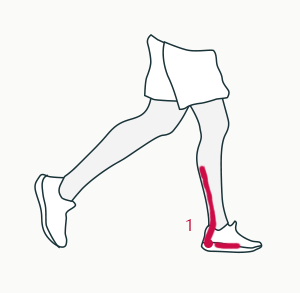 |
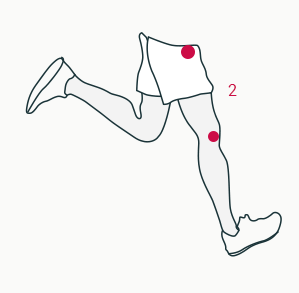 |
| The overstriding rearfoot strike might be influenced by a lower drop. | Overstriding forefoot strike might be prevented with a higher drop. |
In all of our reviews, you can find the exact heel drop for every shoe. We adhere to World Athletics guidelines on where to measure the stack height and then we calculate the drop.

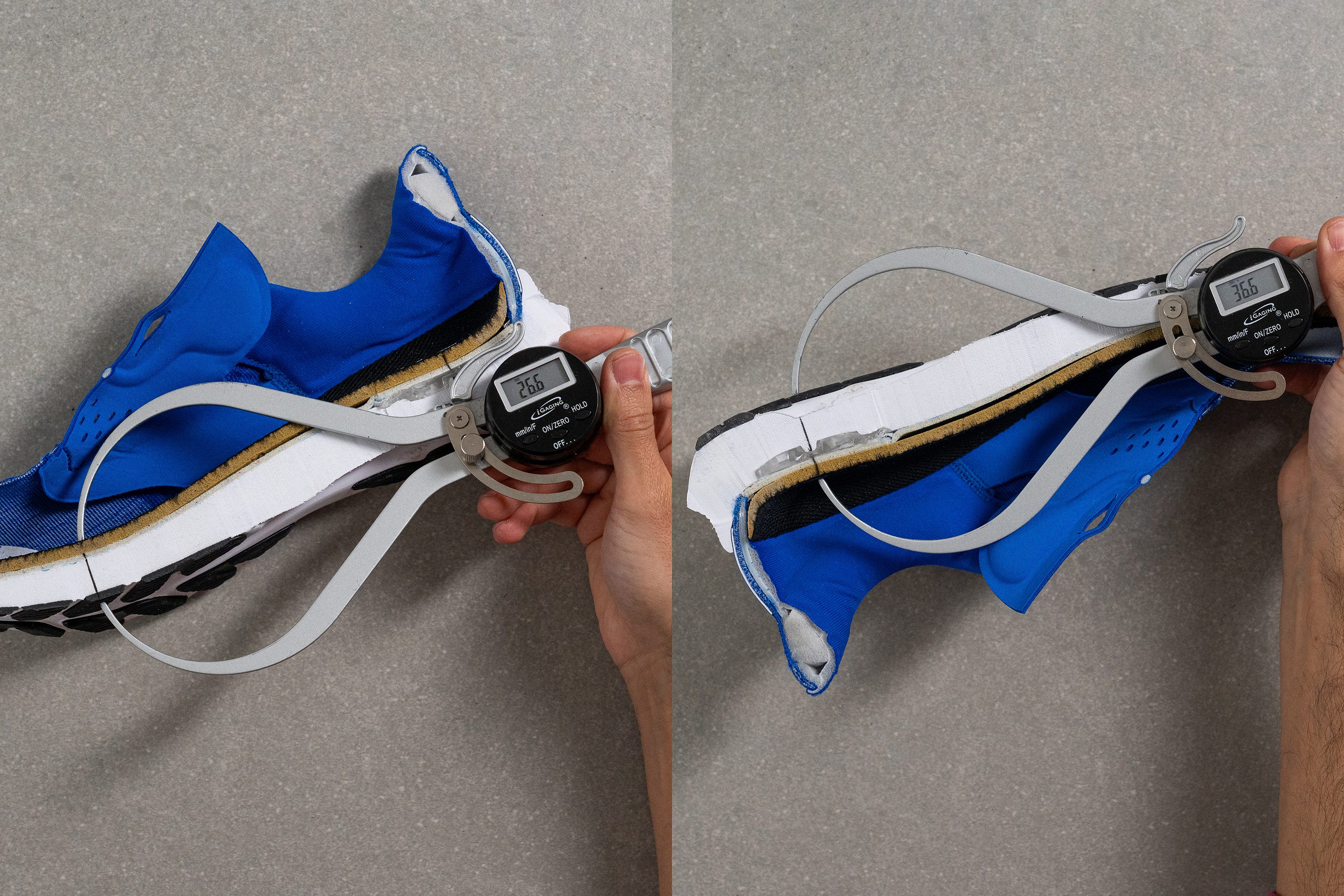
Read more about this in our in-depth guide on heel to toe drop.
How to optimise your foot strike?
Here are a few things that might help on your way to optimising the foot strike:
- Stop overstriding.
- Watch your cadence and see if there’s room for improvement.
- Pay attention to the heel drop.
- Make videos of your runs. Then watch them in slow motion. Pay attention to what’s happening. Is there anything that could be addressed? Your ankle should be beneath the flexing knee when hitting the ground.
- Strength exercises, core exercises, plyometrics, mobility exercises, everything aimed at improving your movements is highly welcomed.
Foot strike and running shoes
You should definitely take into account your foot strike when buying running shoes. Here's why:
- Because you need support and protection where you land.
- Because you should not pay for things you won’t be using.
- You choose the best shoes for you, why would anything else weigh you down?
Keep in mind that, if you’re having doubts, brands usually specify which strike each shoe is for on their website.
Running shoes for forefoot and midfoot strikers
Look for shoes that offer enough support and protection at the forefoot/midfoot. This means cushioning and maybe even a rock plate (if you’re a trail runner).
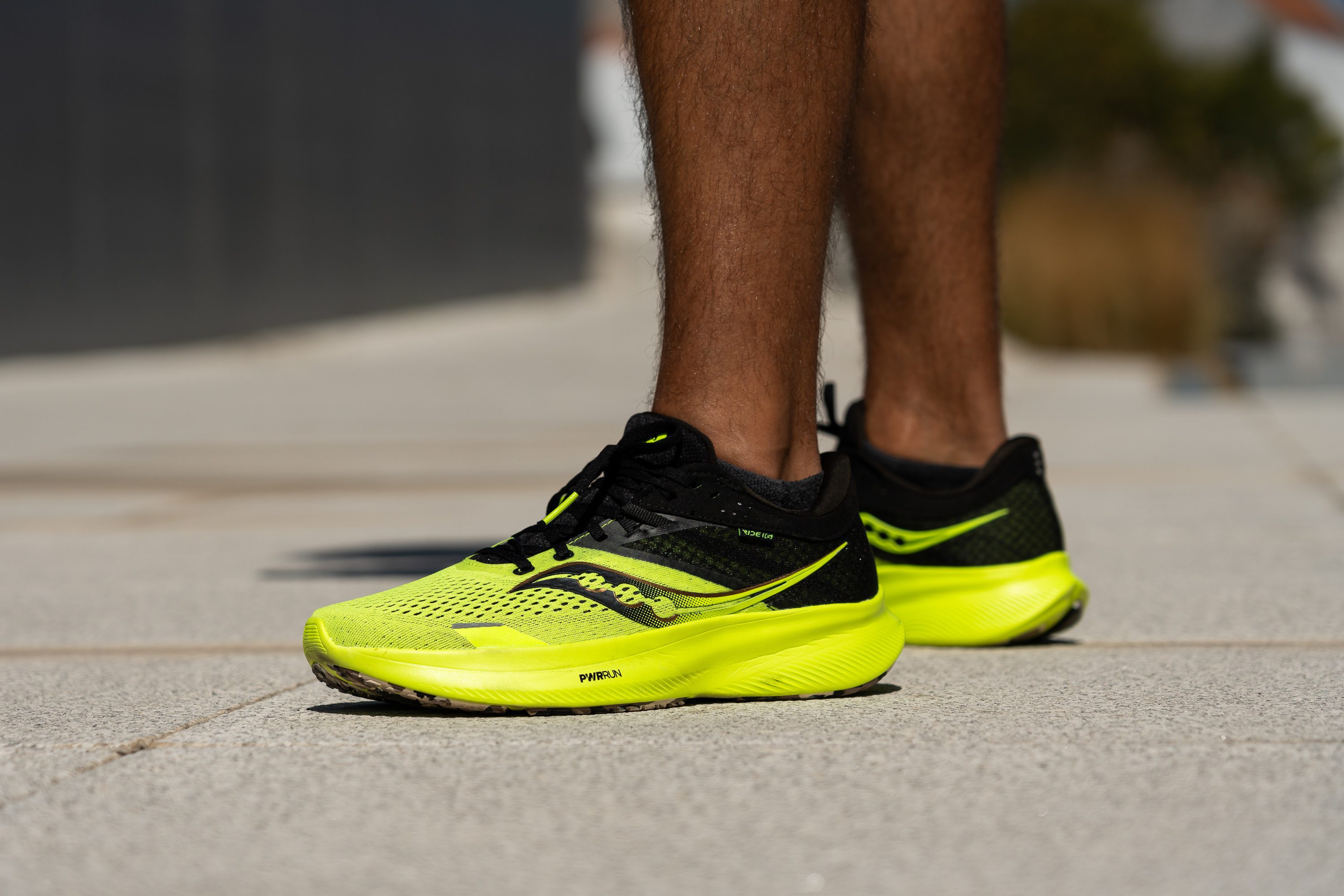
Avoid shoes that are heavily focused on the heel: you will be paying for fancy technologies that you won’t utilise (gel packs, stabilisation elements, etc.). They might weigh you down and you will be overpaying the shoe.
These shoes:
- usually have a heel drop lower than 10 mm
- can be carbon-plated race-ready shoes, because these shoes are best utilised when landing on the forefoot, which activates the plate and the responsive foam together
Shock absorption and energy return of running shoes for forefoot/midfoot strikers
Shock absorption is all about protection. Running shoes with higher (better) shock absorption have a midsole that can greatly dampen the impact. When it does this job well, significantly less stress is sent to the legs at each landing.

Energy return, on the other hand, tells us how much energy is returned once the runner hits the ground. Some of that energy is spent on the deformation, some on the heat, and a great deal of it can be used for rebound. This is why running shoes with high energy return feel propulsive and lively.
It's important to focus on the right numbers here: the average energy return at the forefoot for all running shoes sits at 60.8%, while the average shock absorption also for the forefoot is 105 SA.
Running shoes for heel strikers
Find shoes that are cushioned at the heel.
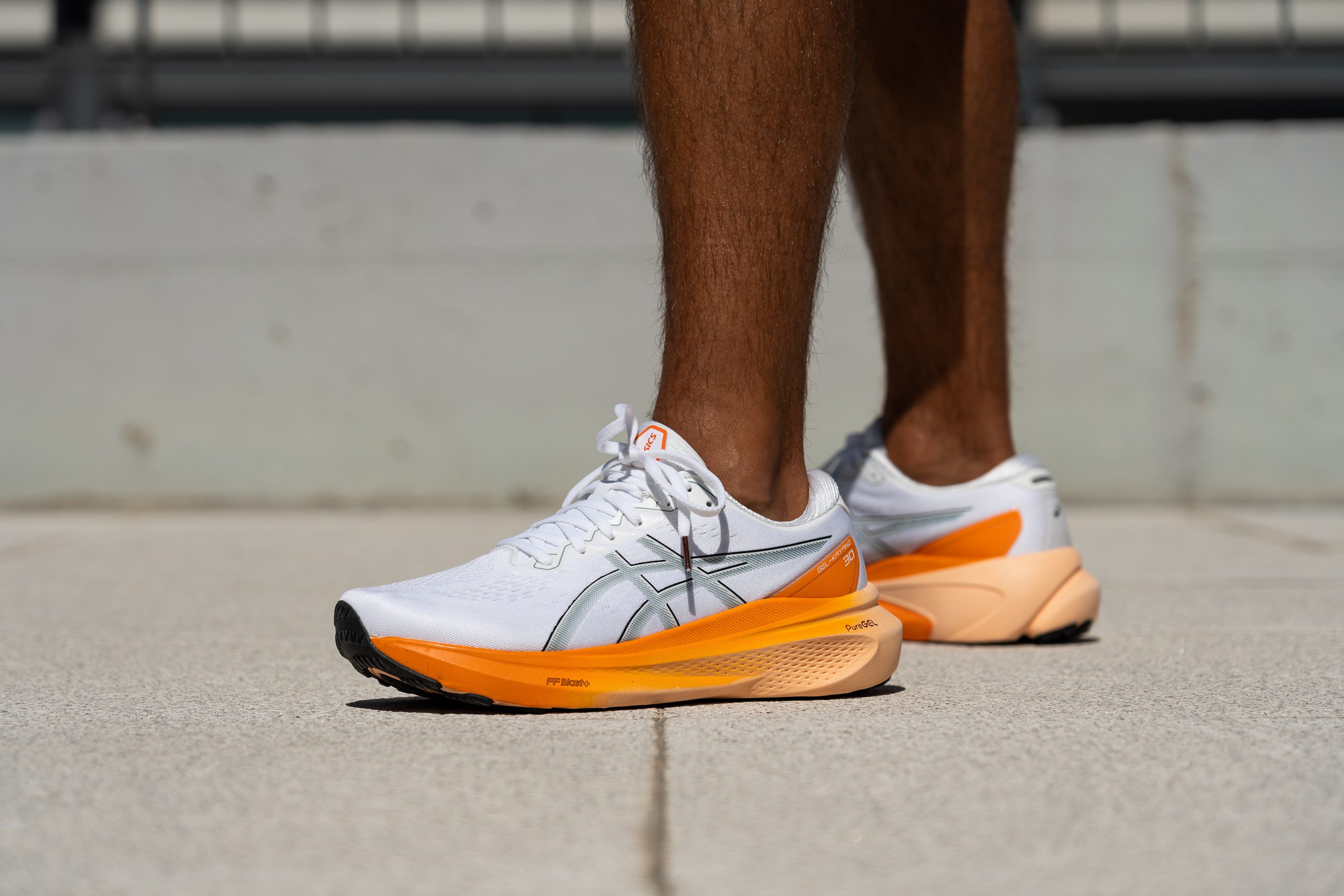
Impact forces are strong and you need an appropriate amount of support.
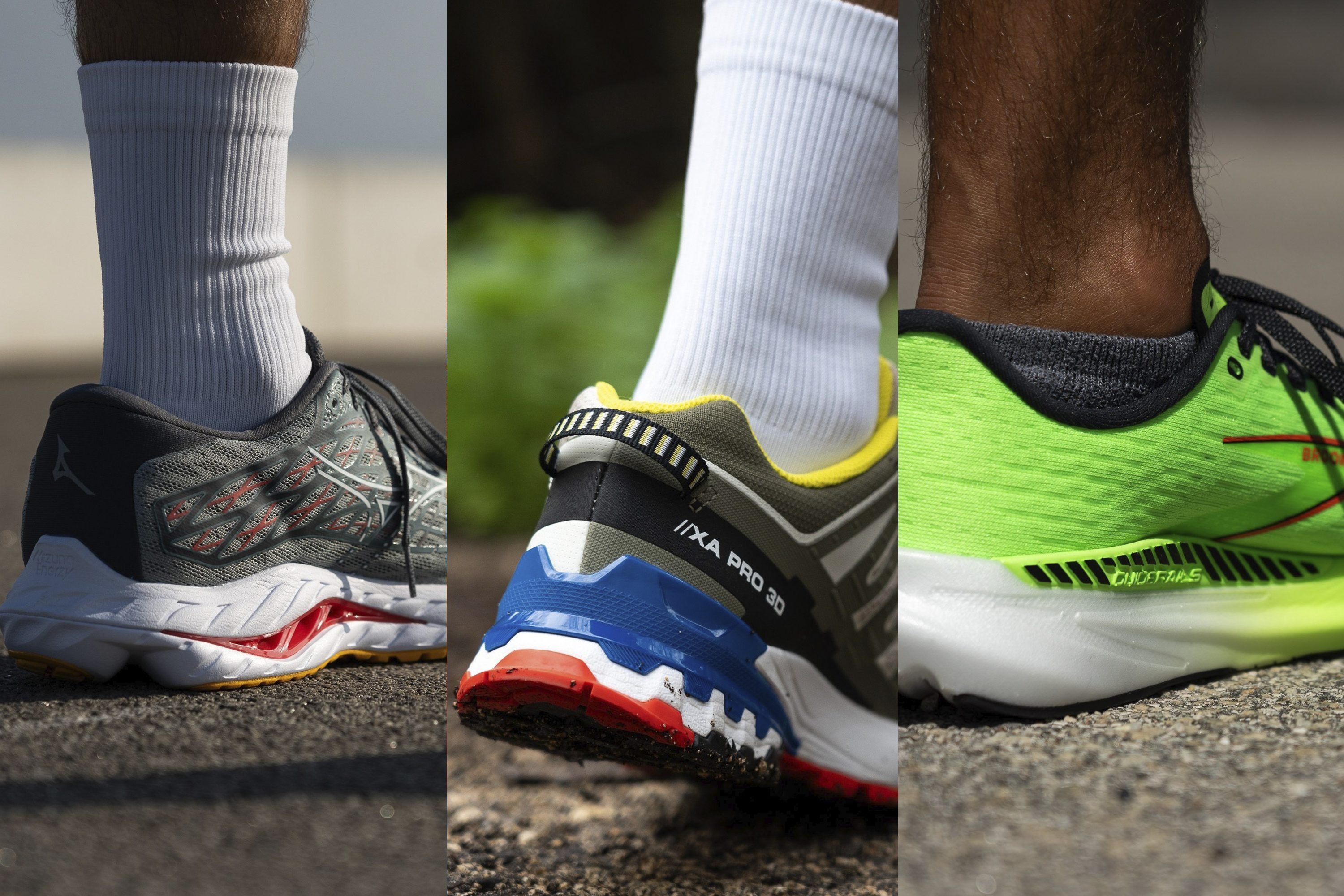
Pay even more attention to this if you’re a big runner (see the selection of running shoes for big runners) or have different stabilisation needs (running shoes for overpronation).
These shoes:
- Have a lot of cushioning in the heel to be able to absorb the impact. We advise a minimum of 20 mm, but ideally, close to 30 mm or more depending on how heavy you are and the type of the shoe (recovery, race, etc.)
- Usually have a heel drop of more than 8 mm.
Shock absorption and energy return of running shoes for heel strikers
As mentioned above, shock absorption and energy return are very important because they tell us a) how protective the midsole is, and b) how responsive the ride is. Ideally, we should look for high test results for both.
Testing the energy return and shock absorption at the heel in RunRepeat lab
[/local_video]
However, we should keep in mind that daily trainers often focus on durability, budget, and maybe even stability, which is why their energy return is not the highest. Energy return is prioritised in race-day shoes. Shock absorption, on the other hand, is very important for long runs, recovery runs, and heavy runners.
Prevalence of RFS, MFS and FFS
The rearfoot strike is by far the most common foot strike. Many studies have shown that.
All these studies were done at different races. These are the results:
| Distance (race) | Results |
| The half marathon in Japan (finish) |
Number of runners: 415 Rearfoot strike: 74.9% Midfoot strike: 23.7% Forefoot strike: 1.4% |
| Top 50 finishers at a half marathon in Japan |
Number of runners: fastest 50 runners Rearfoot strike: 62.0% Midfoot strike: 36.0% Forefoot strike: 2.0% |
| 10k point at Manchester marathon |
Number of runners: 286 Rearfoot strike: 87.8% Midfoot strike: 3.1% Forefoot strike: 1.4% 7.7% were asymmetric |
| 32k point at Manchester marathon |
Rearfoot strike: 93% Midfoot strike: 3.5% Forefoot strike: 0 3.5% were asymmetric |
| 8k point at Milwaukee Marathon |
Number of runners: 1,991 Rearfoot strike: 93.7% |
| 8km point at 50k trail race |
Number of runners: 165 Rearfoot strike: 85% |
| 16k, 90k, finish point at 100-mile trail race |
16k rearfoot strike: 79.9% 90k rearfoot strike: 89.0% 161k rearfoot strike: 83.9% |
